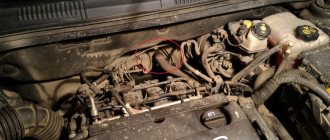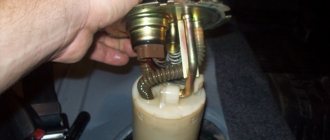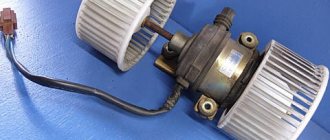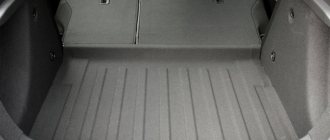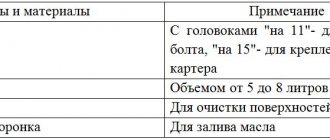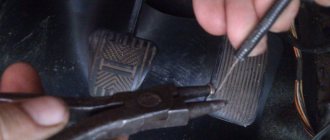Description of problems with the stove on a Chevrolet Cruze
Frequent problems with the Chevrolet Cruze are related to the vehicle's heating system. This happens at any interval, regardless of mileage. As statistics of calls to service stations show, there are only two reasons:
- drive malfunction, damper motor does not work;
- damage to the drive rod, it is located to the left of the main unit.
Regardless of the identified cause, the torpedo is completely dismantled, as it creates an obstacle to repairs. Some unscrupulous mechanics of “handicraft workshops” practice replacing the drive without removing the dashboard. The repair takes no more than half an hour, but the fee for the work is a piece of plastic that will be cut from the side trim at the bottom. We do not recommend troubleshooting this way.
Most often, the left, driver's side is faulty; cold air blows from the deflectors, and the right passenger's side is hot. You can fix the malfunction yourself, if you have minimal experience in servicing the technical device, otherwise you risk causing harm and disrupting the installation algorithm.
Popular troubles
Many car owners are ready to confirm that problems with the Chevrolet Cruze stove arise quite quickly after purchasing the car. Unfortunately for many car enthusiasts, this system is not highly reliable and practical. Breakdowns can be of different types.
Sometimes cold air blows from the Chevrolet Cruze heater, and the setting is set to heating the interior. Switching modes doesn't help. There are situations when the stove simply does not work in a Chevrolet Cruze. She does not respond at all to the driver’s manipulations. Then you need to immediately repair it yourself or go to a car service center.
The heating system is inoperative if at least one of the following symptoms is present:
- in Chevrolet Cruze the heater blows a cold stream of air;
- heating is carried out only on one side, driver or passenger;
- the stove does not respond to being turned on;
- noise from the radiator is heard;
- The Cruze's heater needs repair when leaks are visible in the hose connecting the car's main radiator and the heating radiator.
No heating
When the heater on a Chevrolet Cruze does not heat, and cold air escapes through the deflectors, the reason is most often hidden in the condition of the heating radiator. The coolant level in the system probably needs to be checked. In case of obvious leaks, the smell of coolant will be felt in the cabin.
A damp coating on the inside of the windshield is also a negative sign of problems with fluid circulation in the system. It is important to pay attention to the slight burning smell coming from the deflectors.
The radiator is replaced according to the following algorithm:
- With the engine cool, open the CO tank cap.
- Place an empty container under the radiator, at least 10 liters.
- We unscrew the valve from below and wait for everything to flow out.
- Remove the moisture-proof lining near the glass.
- We remove all the clamps and tubes from the frill.
- We remove the cover, fold out the wiring and remove the front of the fan.
- We take out the cabin filter into the housing and fold out the suitable tubes.
- We remove the old radiator.
- We install a new one and reassemble in reverse order.
Heating is only on one side
The reason for flows of different temperatures coming out of the deflectors onto the passenger and driver may be a broken damper rod. Critical loads for it are created by an active air stream from the fan. The traction eye breaks, because it is the weak link in the structure. As a result, warm air flows only in one direction.
It's easy to prevent breakdowns. Before turning the system on/off, the driver should reduce the heating intensity or turn it off completely. The eyelet can be made independently from available durable materials.
Hose depressurization
Leaks sometimes occur when coolant hoses break. The reasons are their physical wear or wear of the spacer rings, excessive volume of fluid in the system (it expands and breaks off the fastenings). There can also be several problems at the same time.
Leaking tubes must be replaced. Patching them is not recommended. When a leak is detected at the junction, it is enough to install a new spacer ring.
Noise from the stove
A popular problem is noise. It may be permanent or disappear/return periodically. The culprit of the situation turns out to be a faulty electric motor that rotates the impeller. Repairing the electric motor is unlikely to be advisable, so it is necessary to replace it.
Causes and solutions
Characteristic symptoms of a malfunction:
- weak flow of warm air from the deflectors;
- cold air blows despite the maximum degree set on the instrument panel;
- air enters periodically, with obvious differences;
- the motor operates unstably, with over- and under-revving;
- The motor is not activated by a mechanical lever.
Frequent causes of breakdowns:
- negative consequences of an accident, collision, impact;
- poor-quality connection, fixation of air supply channels from the stove heater to the deflectors;
- the motor winding burned out;
- the sensor does not show the temperature, the electronic control unit identifies an error;
- the air system is clogged with foreign objects, leaves;
- The expansion tank plug is deformed, the pipes are worn out. Formation of antifreeze leaks in the cooling system in the car interior, engine compartment;
- short circuit in the network;
- poor contact at the terminals;
- Fuse failure in the Chevrolet Cruze control unit.
Effective ways to fix a breakdown
- Chevrolet Cruze fuse box diagnostics;
- checking the level of antifreeze in the system;
- dismantling the torpedo, replacing worn and damaged parts.
Work to eliminate defects is carried out both independently and with the help of service station motorists. In the first case, you need to have experience in servicing the Chevrolet Cruze.
If you have tools, consumables, and a spacious repair area, the replacement will take no more than one hour. There’s just one problem: you need an assistant, it’s hard to do it yourself.
Heater repair on a Chevrolet Cruze
We begin replacement only after carrying out comprehensive diagnostics, identifying the breakdown, location, and assessing the general technical condition of the vehicle. Starting repairs without the above work is a sign of extreme unprofessionalism. This happens in “handicraft workshops”, when the thirst for profit prevails over quality.
Main stages of replacement (dismantling)
- We install the Chevrolet Cruze on a flat, spacious area;
- disconnect both terminals from the battery to avoid a short circuit in the network;
- the doors in the front part of the cabin are open;
- stage No. 1: remove the glove box by pressing the side walls with your hands;
- access to the rear of the center console is provided. Through the “window” capabilities, you can remove boards from the audio system, control levers, and climate control equipment;
- remove the built-in equipment;
- stage #2: central dashboard. Carefully unscrew around the perimeter, disconnect the contact boards, and remove;
- stage No. 3: dismantling the side triangles - plastic inserts on the torpedo;
- stage No. 4: unscrewing the torpedo around the perimeter, removing it from the passenger compartment of the Chevrolet Cruze;
- the final stage: removing the central metal beam of the Chevrolet Cruze. It serves as a kind of barrier, protecting the driver and passenger in a head-on collision. Unscrew two mounting bolts on each side.
After access to the stove heater is obtained, we proceed to troubleshooting. The stove is located in the center; air supply channels branch into the deflectors. We carry out diagnostics for integrity, tightness of fit, fixation at joints. If there are no comments, but the breakdown is still not fixed, we proceed to inspect the motor, contacts, and check its functionality.
You will need a multimeter to test the electrical circuit, detect damage to cables, breaks, and short circuits. At the same time, we inspect the condition of the stove heater activation levers. It often happens that due to violation of the rules of use, plastic parts break and become deformed. At the same time, the heater and motor remain fully operational.
The following must be replaced: recirculation damper, air ducts, worn parts, motor, and other consumables, the further operation of which is impossible.
Next comes assembly and installation in its original place. At the same time, troubleshooting and modification are carried out; perhaps some details were not noticed during the initial inspection.
An important point: if the drive lever is damaged, it is not necessary to purchase a new one from the Chevrolet Cruze, you can from the Lacetti. They are interchangeable.
Recommendations for servicing a stove heater
- systematically check the level and quality of antifreeze. Do not pour water as an opportunity for partial savings. But it’s impossible to call this savings, especially the cost of repairs;
- follow the basic rules for operating a Chevrolet Cruze car, do not exceed speed and temperature limits. Each increased degree of antifreeze in the system deposits layers and renders the pipes unusable;
- give preference to high-quality, original parts rather than cheap fakes;
- carry out complex repairs only in certified service stations;
Before purchasing parts and consumables, consult with specialists.
We solve eternal problems with the stove on a Chevrolet Cruze car
The Chevrolet Cruze is a car created with an eye on the Russian market. It is not surprising that quite a few of these cars roam our roads, and on the Internet, drivers are actively discussing the advantages and disadvantages of this model. The weak point of the Chevrolet Cruze is the heating system, the professional repair of which is quite expensive. Let's take a closer look at the most common malfunctions of the stove on the Chevrolet Cruze and figure out which of them can be fixed with your own hands.
The design of the heating system of a Chevrolet Cruze car
The Chevrolet Cruze is equipped with a liquid-type heating system. That is, cooling is carried out due to heat transfer from the coolant (coolant). The cooling radiator is connected to the heater radiator via two hoses. They are led through the engine compartment to the area under the central part of the front panel, where the climate unit is located, which includes a stove and air conditioning.
The heater on the Chevrolet Cruze is located in the usual place - under the front panel
The flow of air heated from the radiator moves through a system of pipes and air ducts. It is pumped by the heater fan, after which the air passes through the heater radiator and, with the help of dampers, is directed into the footwells of the driver and passengers, to the air ducts on the instrument panel, as well as to the heated glass air ducts. The Chevrolet Cruze is equipped with heating for the rear of the cabin and the legroom for passengers sitting in the rear.
1 — windshield blower; 2 — flaps for blowing glass and deflectors on the instrument panel; 3 — instrument panel deflectors; 4 — heating of feet; 5 — instrument panel/leg flap; 6 — heater radiator; 7 — cabin filter; 8 — damper of the recirculation system; 9 — air supply box; 10 — cabin air intake; 11 — fan; 12 — fan motor; 13 - evaporator; 14 — drainage for condensate; 15 — damper-temperature regulator; 16 - heating/air conditioning unit housing
Heating system features
This Chevrolet model, like most cars of this brand, uses a liquid-type heating system (CO). In fact, in the Cruze, thermal energy is transferred from the coolant. Two radiators (cooling and heater) are connected by communicating tubes. Communication is carried out through the engine compartment to the area under the central panel, where the climate unit is installed, which includes the stove and air conditioner.
Thanks to the heat from the car radiator, warm air circulates through the channels and air ducts of the system. It is driven by the CO fan. The flow enters the cabin through different entry points:
- foot area for driver and passengers;
- air ducts installed on the central panel of the car;
- pipes brought out for blowing the windshield from the inside.
The heater on the passenger side blows cold air. Help. SXU15.
I myself identified two possible reasons: 1. the heater radiator is clogged. Moreover, it can be both outside and inside (but how can this affect? Everything is fine on the driver’s side. Maybe there is a division on the left and right sides of the heater right away?) 2. The damper servos are faulty (but the direction of air flow from the climate control works for me OK. It turns out it’s unlikely that they are the problem)
Now I’m sitting and staring at the picture of the stove from existential, trying to understand how everything works there
I decided to buy two pieces of GOST hose, 2 meters each I think is enough for a sweet soul and to blow the radiator back and forth
Question: if I supply water from the heating system (battery) of the garage, will my radiator burst? Let's say the honeycomb will break or the rubber seal where the tube clings will squeeze out? could something like this happen?
I decided to buy two pieces of GOST hose, 2 meters each I think is enough for a sweet soul and to blow the radiator back and forth
Question: if I supply water from the heating system (battery) of the garage, will my radiator burst? Let's say the honeycomb will break or the rubber seal where the tube clings will squeeze out? could something like this happen?
I decided to buy two pieces of GOST hose, 2 meters each I think is enough for a sweet soul and to blow the radiator back and forth
Question: if I supply water from the heating system (battery) of the garage, will my radiator burst? Let's say the honeycomb will break or the rubber seal where the tube clings will squeeze out? could something like this happen?
yes, s. I bought a 2 liter canister of liquid for the radiator. just in case. suddenly a little spills out. and bought hoses. two pieces of 2 meters each. GOST. 16mm in diameter. Dad brought the pump, but with the pump the beard came out. Dad waters their garden there with shit inside the pump, it seems to me that there will be more shit than I have in the radiator of the stove))))) I decided to clean the pump first
I decided to connect the hoses to the tubes that stick out in the engine compartment and blow them out “backwards” so that whatever was clogged would be blown out. It seems to me that it will be better this way. I just can’t understand where the supply is and where the output is. tell me please
yes, s. I bought a 2 liter canister of liquid for the radiator. just in case. suddenly a little spills out. and bought hoses. two pieces of 2 meters each. GOST. 16mm in diameter. Dad brought the pump, but with the pump the beard came out. Dad waters their garden there with shit inside the pump, it seems to me that there will be more shit than I have in the radiator of the stove))))) I decided to clean the pump first
I decided to connect the hoses to the tubes that stick out in the engine compartment and blow them out “backwards” so that whatever was clogged would be blown out. It seems to me that it will be better this way. I just can’t understand where the supply is and where the output is. tell me please
hooray! cleaned it! I used a 220 volt household vibration pump “trickle”, a 20 liter plastic bucket (from under construction putty)
pumped for 5 minutes, swapping hoses. 5 times in one direction. 5 times in another. I started by feeding in the opposite direction. and then changing the direction (hoses) no chemicals were used in place of the liquid Coca-Cola was used)))))))
everything in general is as I expected, the heater radiator was clogged with metal shavings from a faulty pump (it was replaced 2 years ago), about half of the matchbox came out there, in general, the pump axis moved and it scraped a rather deep groove in the body with its blades, then it got tightly caught and spun timing belt engine 5S-FE
We independently repair the heater damper on a Chevrolet Cruze
In our cold climate, a working car heater is the key to comfortable operation of the vehicle.
This applies to all cars, and the Chevrolet Cruze is no exception.
The problem is that the heating system on this car is clearly not designed for the harsh domestic climate and often breaks down.
Fortunately, you can repair the heater on a Chevrolet Cruze yourself. Let's try to figure out how this is done.
Answers (2)
it is possible that the interior sensor does not correctly “see” the temperature when driving and gives a command to the valve to open the damper.
Try switching the heater mode to cold air, it will change) And this is a normal process, the damper cannot cut off the air flow 100%.
How the stove turns off. . Hot air constantly blows. Enough. Everything is turned off, the horn is on cold, but it is blowing... There is nothing to breathe in the car. And constantly closing the damper is annoying. I got out of the car 7 times at a time and with each start, I forgot about this damper until I couldn’t breathe.
- nowadays July 24, 2021 06:35
Try setting the air intake mode to recirculation rather than from the street
- objet199006 July 24, 2021 08:38
The same crap, I put the position in the face and close the fence from the passenger compartment with rollers
- sham198002 July 24, 2021 10:27
Nowadays, you have to turn it on every time, it starts to infuriate.
- topheavy8469 July 24, 2021 11:07
Turn the stove on, for example, to a lower temperature and quickly take a photo of it. Show me how your stove is set up!?
- sham198002 July 24, 2021 11:08
topheavy8469, I’ll go down to the car now.
- topheavy8469 July 24, 2021 11:46
sham198002, just took a photo. I am in this situation and everything is fine.
In our cold climate, a working car heater is the key to comfortable operation of the vehicle. This applies to all cars, and the Chevrolet Cruze is no exception. The problem is that the heating system on this car is clearly not designed for the harsh domestic climate and often breaks down. Fortunately, you can repair the heater on a Chevrolet Cruze yourself. Let's try to figure out how this is done.
The design of the Chevrolet Cruze heating system
The heating system on the Chevrolet Cruze is designed in the same way as on many other passenger cars.
The company's engineers did not bring anything fundamentally new to this system.
The antifreeze that cools the engine heats up and enters the main radiator.
From there, through a system of pipes, the liquid goes to the stove radiator, blown by a small fan.
Hot air from the stove radiator goes through the air duct system into the interior and heats it.
The Chevrolet Cruze heating system is practically no different from the systems on other passenger cars
Purpose of the stove damper
The stove damper on the Chevrolet Cruze is designed to regulate the flow of warm air entering the cabin from the heating radiator.
It is located to the right of the driver, under the dashboard.
This device is driven by a special rod connected to a small servomotor, which is controlled by a climate control unit.
The damper on the Chevrolet Cruze heater consists of two halves separated by a partition
Diagram of the heating system and the principle of its operation
Chevrolet Cruze sedan interior dimensions. Dimensions Chevrolet Cruze sedan, hatchback, station wagon
The supply of warm air to the Chevrolet Cruze interior is carried out as follows:
- from the cooling radiator, part of the hot coolant flows through two hoses into the heater radiator;
- the air flow, forced by the heater fan, passes through the heater radiator, heats up and is supplied through a system of air ducts and special pipes to certain places in the car interior;
- Adjustable dampers installed in the air ducts allow you to direct and regulate the supply of warm air to the feet of the driver and passengers sitting in the front and rear seats, as well as to the windows and vents of the center panel.
The main damper, which opens the way for warm air, is located to the right of the driver and hidden under the dashboard. It opens/closes with a special rod connected to a servomotor, which operates under the control of the climate control system.
Important! In modern Chevrolet Cruze cars, the main air duct is divided into two parts. Each of them has its own damper, which is controlled by a separate servomotor. The climate control system in the Chevrolet Cruze is located on the center console of the dashboard
The climate control system in the Chevrolet Cruze is located on the center console of the dashboard.
Experts note that the heating system of the Chevrolet Cruze is almost identical to the systems mounted on other passenger cars. Its reliability during operation leaves much to be desired. At the same time, the list of typical faults characteristic of such a heating system has long been known to specialists working at service stations, as well as to many car enthusiasts.
This is interesting: Self-diagnosis and troubleshooting of the fuel tank
Common malfunctions of the Chevrolet Cruze heater
It should be noted that the vast majority of breakdowns on the Chevrolet Cruze are associated with the draft of the stove damper.
The fact is that the eye on this rod is made of cheap and very fragile plastic, which easily breaks in thirty-degree frost.
This results in several problems listed below.
Video: broken rod on the Chevrolet Cruze stove damper
The stove only blows cold air
The air duct on modern Chevrolet Cruze cars after restyling is divided into two sections - left and right.
Consequently, each section has its own heating damper.
There are also two control rods attached to these dampers. One on the driver's side, the other on the passenger's side.
If the heater on a Chevrolet Cruze only blows cold air, it means that the rods on both dampers have broken, they have dropped to the lowest position, where they remain.
For this reason, cold air begins to blow on the feet of both the driver and the passenger, and a small part of the hot air goes to the windshield.
Video: double stove dampers of a modern Chevrolet Cruze
The stove blows cold and hot air
The situation when the Chevrolet Cruze heater begins to blow cold air on the driver and hot air on the passenger (or vice versa) is observed if the draft breaks on only one of the heating dampers, while the second is normally controlled by its servo drive.
The problem is solved by disassembling the heating system and repairing the broken draft.
Leaking pipes on the Chevrolet Cruze radiator
Another common malfunction is leaking pipes on the Chevrolet Cruze stove radiator.
This happens because the quality of the O-rings on these pipes leaves much to be desired.
And in the harsh domestic climate, these rings become unusable in just three years.
After this, coolant begins to flow from under the mounting clamps.
The Chevrolet Cruze pipe leaked due to a worn o-ring
To see the leaks, just look under the hood of the car.
The problem is solved by completely replacing the O-rings on all stove pipes.
Rubber rings are required, the outer diameter of which is 30 mm and the inner diameter is 25 mm.
As a rule, such rings are sold in sets. The cost of one set can vary from 300 to 700 rubles.
Rubber O-rings for heating pipes are usually sold in sets
Why doesn't the Chevrolet Cruze, Orlando's heater heat up?
The cold weather is coming, and with it comes an irresistible desire to set the temperature regulator to the hottest position. There is no doubt that everyone wants to ride in a warm car when it is cold outside. And you and I, friends, are lucky; Cruz itself is a very warm car. If the stove is working properly and the interior heating system is well sealed, no modifications in the form of an additional pump, a second stove, or other crap are required. Cruise's standard stove, even if he is in a station wagon, copes well with the cold. In a heated cabin, you can safely take off your jacket even if it’s -30 outside. But there is one big BUT. Not every owner of a Chevrolet Cruze and Chevrolet Orlando succeeds in this... The thing is that the materials that were used in the manufacture of the heater dampers and the body itself are not at all designed for the air temperature in which they have to work. With a certain mileage, usually when it approaches 100,000 km and the heater damper breaks. First of all, the mounting lugs on the damper fall off. You are lucky if one of the two ears breaks off. Then you can temporarily repair the damper by cutting a hole in the heater and securing this very eyelet in place with improvised means. There are no factory plugs in the stove body.
This is the same eyelet on the stove damper.
In this case, I usually attach one fabricated aluminum plate mount that completely follows the curve of the damper. Enough for a certain period of time (this procedure is done if the client has no desire for unforeseen expenses). As a rule, if a damper on one side has fallen apart, then another one (on the other side) is next in line, which will also not take long to arrive... If you try to restore the dampers in this way, then be careful; when you try to drill the damper, it will instantly crumble and break. If the damper breaks at the root or the second one breaks off, remove the dashboard.
There are also worse cases, when two ears break off at once, or the long-range rod breaks. Such a damper cannot be repaired through a homemade hole in the stove body. There are no options - removing the dashboard and repairing the valves. In this case, it is better to immediately repair two dampers (4 lugs in total), so as not to remove the dashboard in a year.
Two damper rods are broken
What comes next is worse. If you managed to miraculously repair all the dampers, then after a mileage of more than 150,000 km, the rubber seals of the dampers begin to crumble (they turn into very sticky plasticine) and the stove body itself (becomes very fragile)... Where the dampers sit, it simply crumbles and breaks. Where do you think the pieces of this same plastic end up? That's right - on the heater radiator. An unpleasant smell of burnt plastic appears in the cabin, and with all this, the stove will no longer be so airtight. And what’s most interesting is that even if the heater body is intact, you won’t be able to buy the dampers separately - they are only sold assembled with the interior heater.
Chevrolet Cruze dashboard removed
Usually, when removing the dashboard, the car is completely vacuumed and cleaned. All air ducts in the dashboard are blown out. We also dry-clean the air conditioner radiator, which, as you know, accumulates a lot of bacteria. All this is included in the interior heater repair service.
Chevrolet without dashboard
Location of the climate control control unit on the Chevrolet Cruze
The climate control control unit is located under the dashboard, to the right of the driver.
This is a rather complex device, so the average car owner will not be able to fix its malfunctions on his own.
This requires the intervention of qualified specialists from a service center who have the necessary diagnostic equipment.
In case of malfunctions with the climate control unit on a Chevrolet Cruze, you cannot do without the intervention of specialists
Important nuances
As mentioned above, problems with the heater on the Chevrolet Cruze usually arise due to a faulty damper.
But there are also more rare situations that the driver needs to be aware of. Here they are:
- The car’s heating system stops responding to button presses on the climate control control unit. If this happened on the road and the service center is very far away, then the problem can be solved by simply opening the hood and removing the negative terminal from the battery for 10 seconds. The next time you start the engine, the program in the climate control unit will be rebooted and the heating system will again begin to respond to commands;
To restore normal operation of the climate control unit, sometimes it is enough to simply remove the terminal from the battery
- the stove can pump cold air into the cabin not only due to the breakdown of both dampers, which was mentioned above. Sometimes the reason for the appearance of cold air can be a banal lack of antifreeze in the expansion tank. So if the dampers on the Chevrolet Cruze are working normally, but cold air is still coming into the cabin, you should look under the hood. There may be a serious antifreeze leak somewhere and the expansion tank is empty;
The level of antifreeze in the Chevrolet Cruze expansion tank must be carefully monitored
- When cutting a repair hole in the panel, do not remove the piece of plastic completely. It is better to cut the plastic partially and bend it to the side as shown in the photo below. This will make it much easier to seal the hole after repair.
The plastic panel of the Chevrolet Cruze does not need to be completely cut out
Serious problems in the Chevrolet Cruze heating system can only begin if there is a malfunction in the climate control unit.
In this situation, it is impossible to do without the intervention of specialists.
And you can repair the stove damper yourself in a garage.
Furnace damper repair
Before starting work, we will decide on the tools and consumables. Here they are:
- Phillips screwdriver;
- flat blade screwdriver;
- knife;
- a piece of steel wire (length - 20 cm, diameter - 4 mm);
- electric drill with a 5 mm drill bit;
- tube of Moment glue.
Repair sequence
- The car interior on the driver's side opens. There is a small drawer under the light switch block. It opens completely, then gently pulls out towards itself. The plastic latches on which it is held will open with a characteristic click and the drawer can be removed from the niche.
The Chevrolet Cruze glove compartment lid opens completely, then is removed from the niche
You can press the light switch on the Chevrolet Cruze through the glove compartment opening
The light switch on the Chevrolet Cruze should be disconnected from the block with wires
To remove the left trim on the Chevrolet Cruze dashboard, pull it slightly towards you
The lower panel of the Chevrolet Cruze dashboard is held on by three self-tapping screws 7
After unscrewing the fasteners, the Chevrolet Cruze air duct must be carefully moved down
The servo motor for the stove damper on the Chevrolet Cruze is held on by two 5mm bolts
In the repair hole on the Chevrolet Cruze, a broken rod and damper are clearly visible
The easiest way to repair a Chevrolet Cruze rod is a piece of steel wire
Many car enthusiasts repair Chevrolet Cruze rods using steel linings
Upon completion of the Chevrolet Cruze rod repair, the hole is sealed using Moment glue and sealant
Video: repairing the heater damper on a Chevrolet Cruze
Stages of removing a Chevrolet Cruze torpedo to repair the damper:
- The first step is to remove the small glove compartment under the steering wheel from the clamps, which you just need to pull up a little and then towards you.
- Next, through the resulting passage, pull out the headlight dimmers and disconnect them from the electricity.
- Now, using a screwdriver, pry up and pull out the side trim on the panel, then unscrew the 3 fastening bolts and remove the bottom plastic panel.
- Then you need to remove the damper drive motor, having first disconnected the foot air pipe.
- Now, in order to achieve traction, you need to cut a hole in the plastic panel with a heated stationery knife.
- After opening, you can see the broken rod, which is restored using a bicycle spoke, making a special hook out of it.
- Then you need to heat a separate piece of the knitting needle and use it to make a hole in the rod. After which we install the finished hook into the hole made.
- To ensure the stability of the hook, place small nuts on the ends and attach them with superglue.
- Then we check the functionality of the air damper and close the cut hole with sealant.
Assembly should be done in reverse order.
Repairing the Chevrolet Cruze heater damper is a rather complex type of repair that requires a professional approach and special tools. Failure to follow the repair process can have costly consequences, so it's best to call in a professional. The official Chevrolet Avtorus service center in Moscow and Podolsk guarantees high-quality resolution of all problems not only with the repair of the heater radiator, but also with other vehicle malfunctions. Come to Avtorus!
